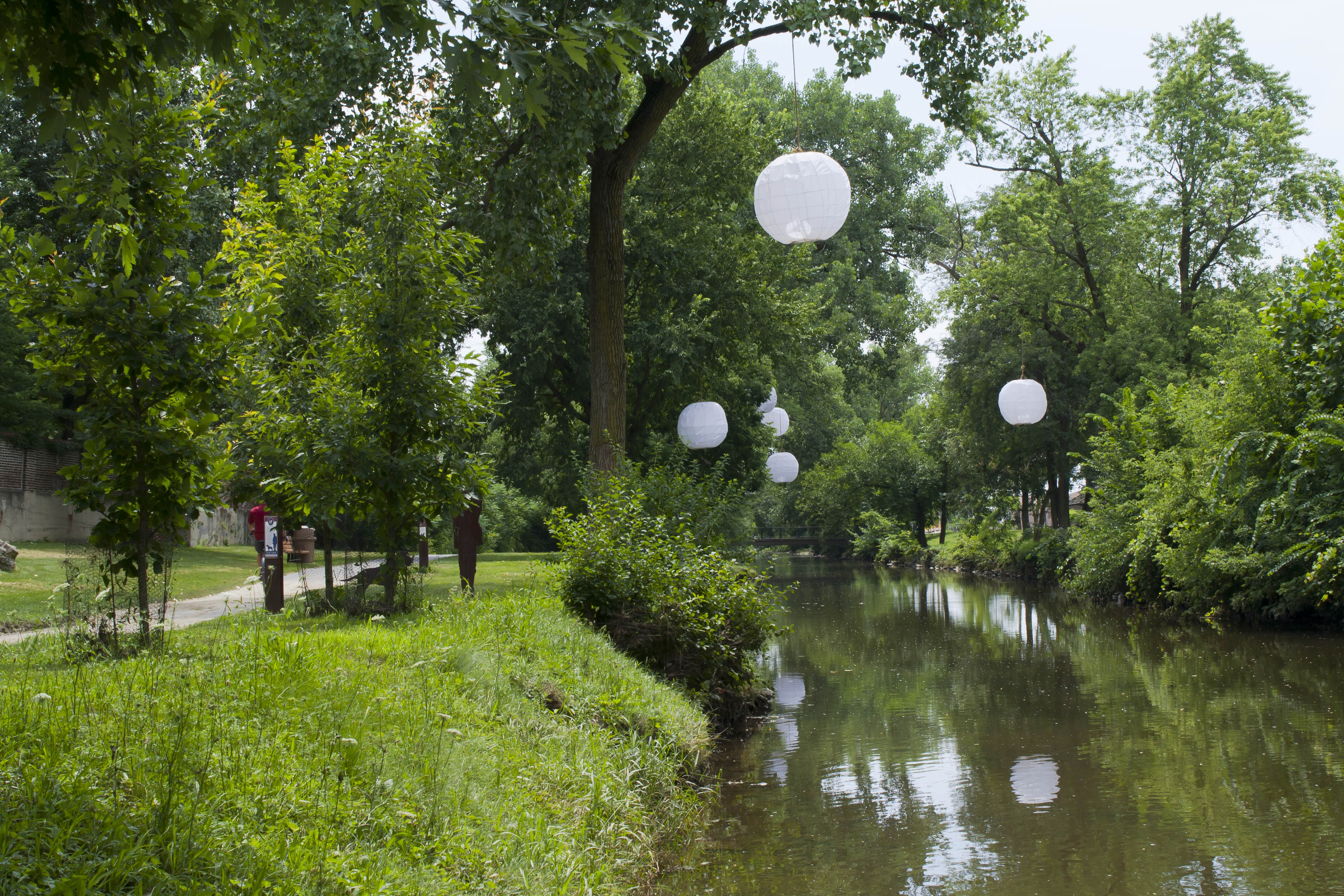unLOCK: Merging Art and Indsutry in Downtown Lockport
unLOCK: Merging Art and Industry in Donwntown Lockport was a citywide art project that commissioned new works by eleven artists to interpret the region’s legacy of indsutrialization. This project galvanized the city’s heritage as an industrial hub to propel revitalization efforts in Lockports historic downtown. By reinterpreting Lockport’s history, unLOCK imagined new futures by reframing the community’s identity. This project was supported by a National Endowment for the Arts grant.


Examining the history of labor, industry, and subsequent abandonment of the I&M Canal, Lyons constructs a “Lab” that seamlessly integrates with Lockport’s namesake, Lock 1. Historically, Lock 1 controlled passage and flow along the canal, and now as part of Lyons’ installation, acts as a center for Lyons to conduct a series of experiments and activities that trace the Canal’s obscured social, economic and environmental histories.

Mednicov lifts language, forms and images from Lockport’s historical archives. She then transfers these fragments of collective memory onto wallpaper in an elaborate collage that shifts between abstracted textures and discernible vignettes of Lockport’s history. By fusing moments of collective and individual memory with decorative wallpaper, Mednicov spotlights the lived experiences of past residents and the ways they continue to shape Lockport’s still unfolding story. Her wallpaper murals are installed in three locations throughout downtown Lockport: The Gaylord Building lobby, the White Oak Library: Lockport Branch, and Embers Tap House.

Developing a unique cryptocurrency for Lockport, bLOCKcoin, Fish recalls the complex history of labor and speculative currency that defined the construction of Lockport’s I&M canal. Taking cues from silicon valley and tech start ups, Fish’s enterprise collaborates with local, Lockport businesses to sell branded paraphernalia that can only be purchased with bLOCKcoin. To find out more visit the official website:
http://www.unlockblockcoin.com/


Dotting the trees along the I&M canal with otherworldly, sculptural spheres, Siblik transforms the everyday into the fantastical. Siblik asks us to examine the landscape around us and the ways we relate to it.